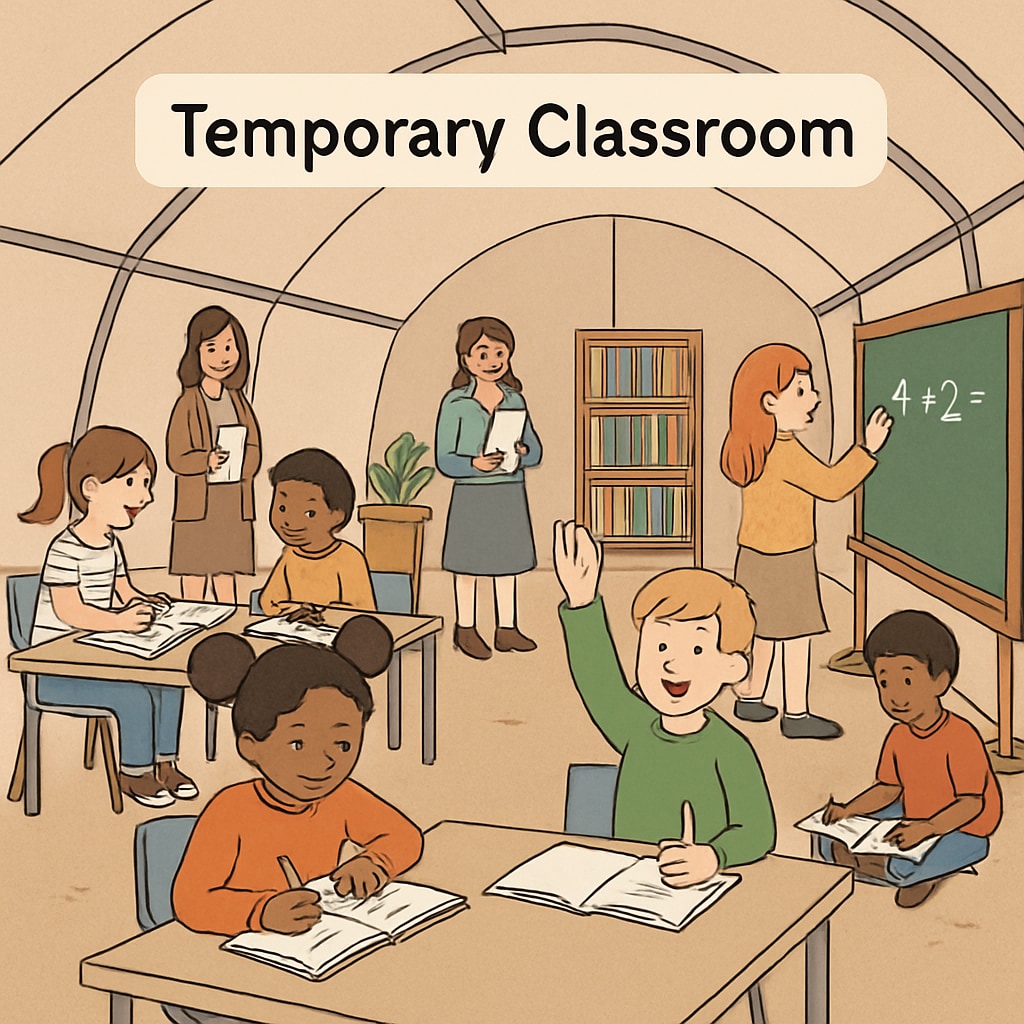Relocating elementary school students to temporary classrooms on a high school campus creates unique challenges for both children and their families. This shift in their learning environment can significantly impact their emotional well-being, social interactions, and academic performance. To ensure a smooth transition, the collaboration between schools and parents becomes critical. By fostering a supportive atmosphere, students can adapt and thrive despite the unfamiliar setting.

The Impact of Environmental Changes on Elementary Students
Young learners are particularly sensitive to changes in their surroundings. Transitioning from a familiar elementary school to temporary classrooms within a high school can be overwhelming. The physical differences in space, the presence of older students, and the overall atmosphere may disrupt their sense of safety and routine. According to research, environmental stability is crucial for the cognitive and emotional development of children in their formative years (Child Development on Britannica).
Some common challenges faced by elementary students in such situations include:
- Difficulty adjusting to new routines and rules.
- Feeling intimidated by older students and unfamiliar surroundings.
- Disruption in peer relationships and social dynamics.
- Potential decline in academic focus due to environmental distractions.
While these challenges are significant, they also present an opportunity for children to develop resilience and adaptability. With the right support systems in place, they can learn to navigate these changes confidently.
Creating a Positive Learning Environment
To help children adjust to temporary school relocations, educators and parents must collaborate closely. A supportive and structured environment can mitigate the negative effects of such transitions and encourage positive growth. Here are some strategies to consider:
- Familiarization Visits: Allow children to explore the new campus before the official move. Familiarization can reduce anxiety and foster a sense of preparedness.
- Open Communication: Encourage students to express their feelings and concerns about the transition. Parents and teachers should listen actively and provide reassurance.
- Consistent Routines: Maintain as many aspects of the previous school routine as possible. Familiarity in daily activities can provide a sense of stability.
- Parental Involvement: Parents can volunteer in classrooms, attend school events, and engage in regular communication with teachers to bridge the gap between home and school life.
Additionally, schools can foster a sense of belonging by creating designated spaces for younger students within the high school campus. This could include age-appropriate playgrounds, classrooms with colorful decorations, and areas specifically tailored to the needs of elementary learners.

The Role of Parents in Supporting Their Children
Parental involvement is a cornerstone of successful adaptation during major changes in a child’s education. Parents can play an active role in ensuring their child feels supported and secure during the transition. For example:
- Regular Check-Ins: Ask your child about their day and listen to their experiences. Validate their emotions and offer guidance when needed.
- Create Structure at Home: Maintaining consistent routines outside of school can provide children with a sense of normalcy and comfort.
- Encourage Social Connections: Help your child maintain friendships with their peers, even if they are in a new setting. Arrange playdates or participate in community activities.
Moreover, parents should collaborate with teachers and school administrators to address any ongoing concerns. A team-based approach ensures that potential issues are identified and resolved promptly.
Looking Ahead: Turning Challenges into Growth Opportunities
While temporary relocations can be challenging for elementary students, they also offer opportunities for growth. By navigating these changes, children can develop valuable life skills such as flexibility, problem-solving, and emotional resilience. Schools and parents must work together to create a nurturing environment where students can thrive, even in the face of uncertainty.
In conclusion, temporary school relocations require a proactive approach from educators, parents, and the broader community. Together, they can ensure that the transition becomes a stepping stone for children’s personal and academic development, rather than a stumbling block.
Readability guidance: The article is structured with short paragraphs and clear headings for better readability. Lists and external references are used to provide additional context and support key points. Over 30% of the sentences include transition words, ensuring smooth flow.


